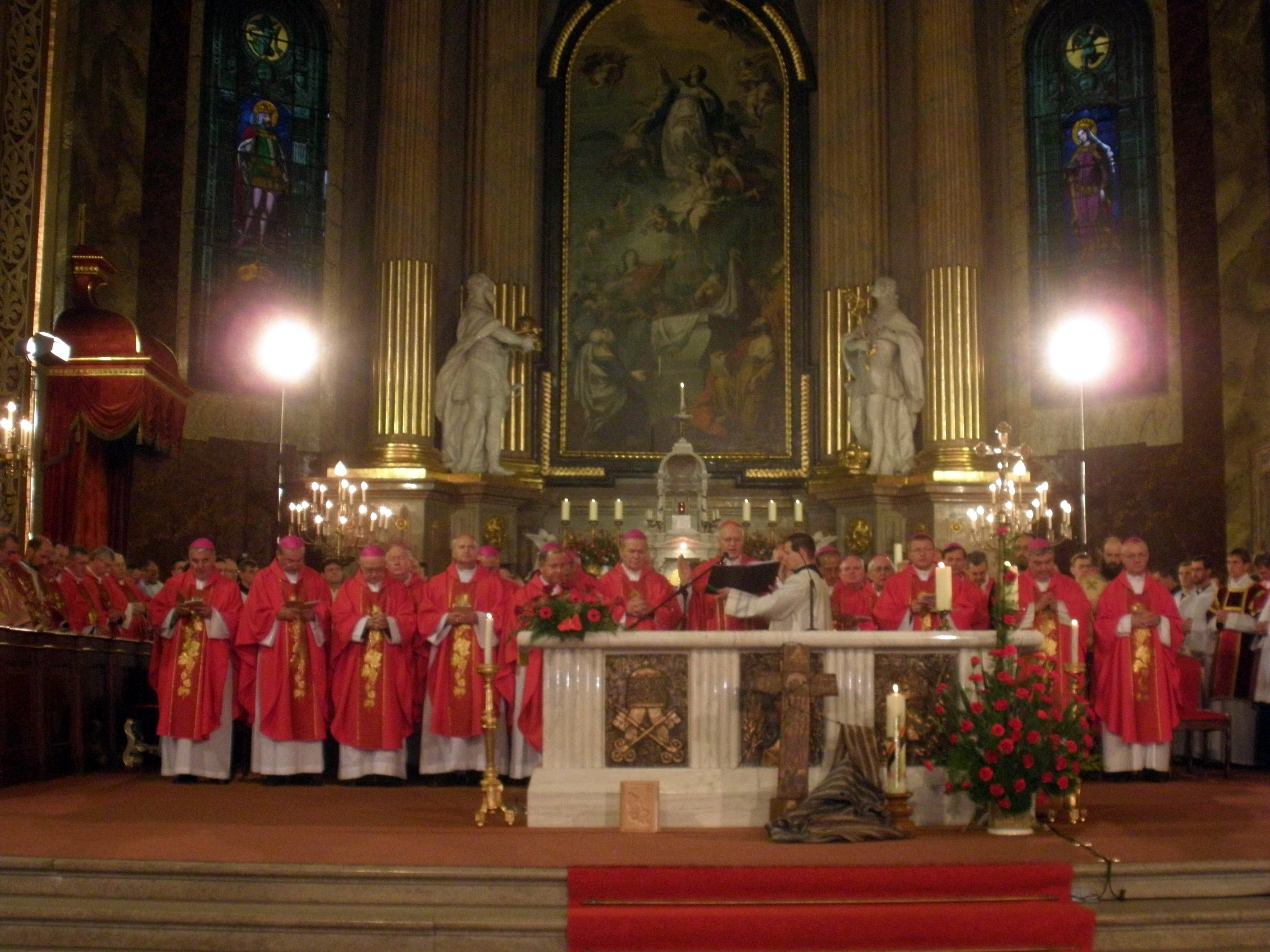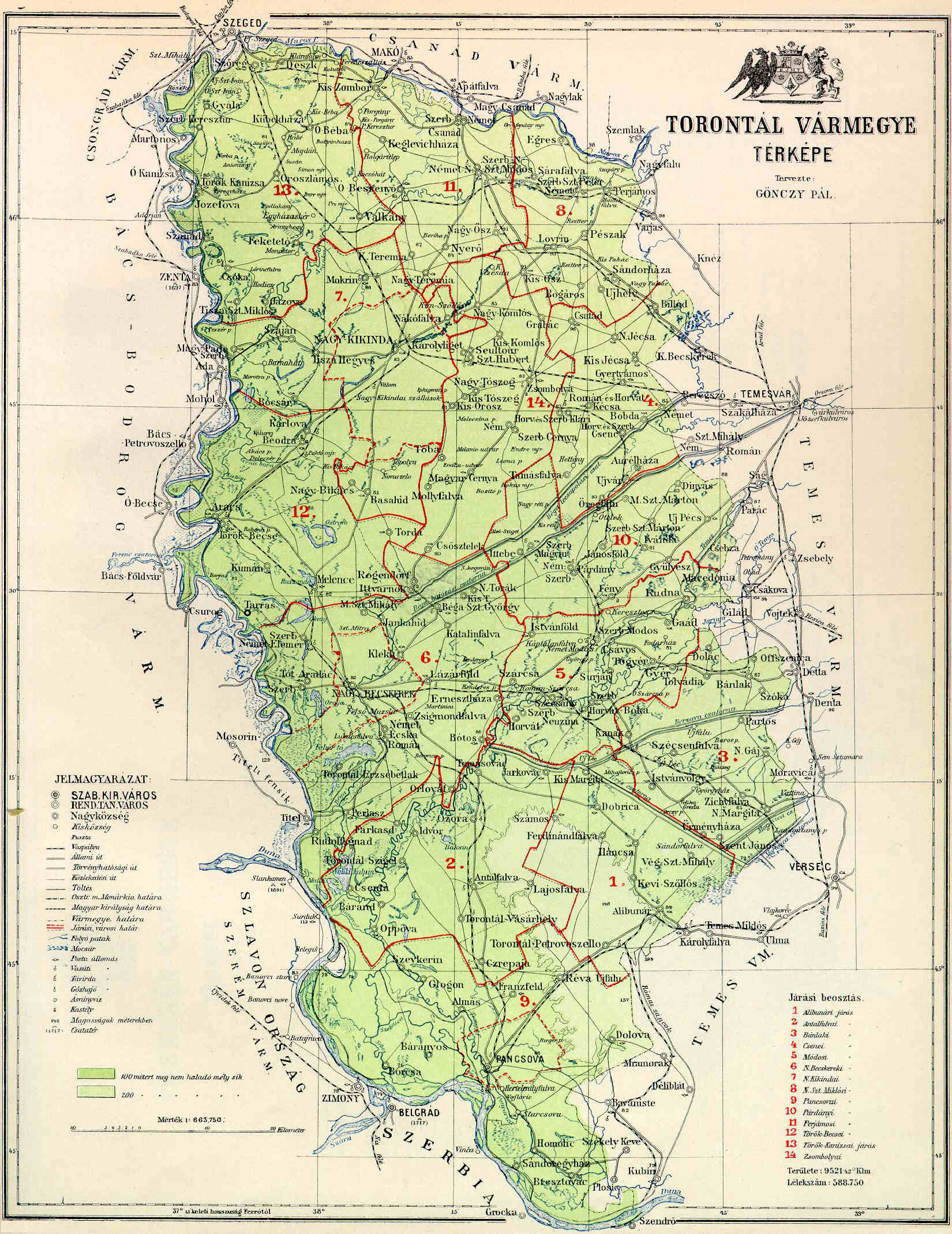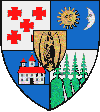|
Szilárd Bogdánffy
Szilárd Ignác Bogdánffy (21 February 1911 – 3 October 1953) was a Roman Catholic auxiliary bishop of Satu Mare and Oradea of the Latin Church, Latins. On 30 October 2010 he was proclaimed beatification, blessed in a ceremony held in the Cathedral Basilica of St. Mary, Oradea, Romania, being recognized as a martyr of the Eastern Bloc, Communist period. Biography Szilárd Bogdánffy was born to Hungarians in Romania, ethnic Hungarian parents on 21 February 1911 in the village of Feketetó, then part of Torontál County, Austria-Hungary; today called Crna Bara (Čoka), Crna Bara, near the town of Kikinda, district Northern Banat, autonomous province of Vojvodina, Serbia. He lived there with his family until 1925. He was baptism, baptized in the parish church of Čoka to which his village belonged and where his father was a cantor. The Bogdánffy family is a Transylvanian Armenians, Armenian family which was granted nobility by the House of Habsburg, Habsburgs. The Bogdánffys ... [...More Info...] [...Related Items...] OR: [Wikipedia] [Google] [Baidu] |
Beatification
Beatification (from Latin , "blessed" and , "to make") is a recognition accorded by the Catholic Church of a deceased person's entrance into Heaven and capacity to intercede on behalf of individuals who pray in their name. ''Beati'' is the plural form, referring to those who have undergone the process of beatification; they possess the title of "Blessed" () (abbreviation "Bl.") before their names and are often referred to in English as "a Blessed" or, plurally, "Blesseds". It is the third stage of the ordinary process of Canonization#Since 1983, official recognitions for Catholic saints: Servant of God, Venerable#Catholic, Venerable, Blessed, and Saint. History Local Bishops in the Catholic Church, bishops had the power of beatifying until 1634, when Pope Urban VIII, in the apostolic constitution ''Cœlestis Jerusalem'' of 6 July, reserved the power of beatifying to the Holy See. Since the reforms of 1983, as a rule, (for non-martyred Venerables) one Miracle, miracle must ... [...More Info...] [...Related Items...] OR: [Wikipedia] [Google] [Baidu] |
Armenians
Armenians (, ) are an ethnic group indigenous to the Armenian highlands of West Asia.Robert Hewsen, Hewsen, Robert H. "The Geography of Armenia" in ''The Armenian People From Ancient to Modern Times Volume I: The Dynastic Periods: From Antiquity to the Fourteenth Century''. Richard G. Hovannisian (ed.) New York: St. Martin's Press, 1997, pp. 1–17 Armenians constitute the main demographic group in Armenia and constituted the main population of the breakaway Republic of Artsakh until their Flight of Nagorno-Karabakh Armenians, subsequent flight due to the 2023 Azerbaijani offensive in Nagorno-Karabakh, 2023 Azerbaijani offensive. There is a large Armenian diaspora, diaspora of around five million people of Armenian ancestry living outside the Republic of Armenia. The largest Armenian populations exist in Armenians in Russia, Russia, the Armenian Americans, United States, Armenians in France, France, Armenians in Georgia, Georgia, Iranian Armenians, Iran, Armenians in Germany, ... [...More Info...] [...Related Items...] OR: [Wikipedia] [Google] [Baidu] |
Čoka
Čoka ( sr-Cyrl, Чока, ; , ; ; ) is a town and municipality located in the North Banat District of the autonomous province of Vojvodina, Serbia. The town has a population of 3,119 and the municipality has 8,556 inhabitants. The Lederer Mansion, also known as the “Marcibányi Mansion,” is located in Čoka. It was built after 1781 when Lőrincz Marcibányi purchased the Čoka estate. The construction of the castle was completed only around 1870 by the next owner, Schwab Károly. At the end of the 19th century, Arthur and Károly Lederer acquired the estate. The property remained in the hands of the Lederer family—one of the wealthiest Jewish families of that time—until World War II. During the war, the castle was under the possession of Hermann Göring. The mansion is on the list of Immovable Cultural Heritage of Great Importance. History The first written record about Čoka was made in 1247. It was part of a feudal tenure of which landowners were often change ... [...More Info...] [...Related Items...] OR: [Wikipedia] [Google] [Baidu] |
Parish
A parish is a territorial entity in many Christianity, Christian denominations, constituting a division within a diocese. A parish is under the pastoral care and clerical jurisdiction of a priest#Christianity, priest, often termed a parish priest, who might be assisted by one or more curates, and who operates from a parish church. Historically, a parish often covered the same geographical area as a Manorialism, manor. Its association with the parish church remains paramount. By extension the term ''parish'' refers not only to the territorial entity but to the people of its community or congregation as well as to church property within it. In England this church property was technically in ownership of the parish priest ''Ex officio member, ex officio'', vested in him on his institution to that parish. Etymology and use First attested in English in the late 13th century, the word ''parish'' comes from the Old French , in turn from , the Romanization of Greek, Romanisation of ... [...More Info...] [...Related Items...] OR: [Wikipedia] [Google] [Baidu] |
Baptism
Baptism (from ) is a Christians, Christian sacrament of initiation almost invariably with the use of water. It may be performed by aspersion, sprinkling or affusion, pouring water on the head, or by immersion baptism, immersing in water either partially or completely, traditionally three times, once for each person of the Trinity. The synoptic gospels recount that John the Baptist baptism of Jesus, baptized Jesus., , Baptism is considered a sacrament in most churches, and as an ordinance (Christian), ordinance in others. Baptism according to the Trinitarian formula, which is done in most mainstream Christian denominations, is seen as being a basis for Christian ecumenism, the concept of unity amongst Christians. Baptism is also called christening, although some reserve the word "christening" for the Infant baptism, baptism of infants. In certain Christian denominations, such as the Catholic Churches, Eastern Orthodox Churches, Oriental Orthodox Churches, Assyrian Church of t ... [...More Info...] [...Related Items...] OR: [Wikipedia] [Google] [Baidu] |
Serbia
, image_flag = Flag of Serbia.svg , national_motto = , image_coat = Coat of arms of Serbia.svg , national_anthem = () , image_map = , map_caption = Location of Serbia (green) and the claimed but uncontrolled territory of Kosovo (light green) in Europe (dark grey) , image_map2 = , capital = Belgrade , coordinates = , largest_city = capital , official_languages = Serbian language, Serbian , ethnic_groups = , ethnic_groups_year = 2022 , religion = , religion_year = 2022 , demonym = Serbs, Serbian , government_type = Unitary parliamentary republic , leader_title1 = President of Serbia, President , leader_name1 = Aleksandar Vučić , leader_title2 = Prime Minister of Serbia, Prime Minister , leader_name2 = Đuro Macut , leader_title3 = Pres ... [...More Info...] [...Related Items...] OR: [Wikipedia] [Google] [Baidu] |
Vojvodina
Vojvodina ( ; sr-Cyrl, Војводина, ), officially the Autonomous Province of Vojvodina, is an Autonomous administrative division, autonomous province that occupies the northernmost part of Serbia, located in Central Europe. It lies within the Pannonian Basin, bordered to the south by the national capital Belgrade and the Sava and Danube Rivers. The administrative centre, Novi Sad, is the second-largest city in Serbia. The historic regions of Banat, Bačka, Syrmia and northernmost part of Mačva overlap the province. Modern Vojvodina is multi-ethnic and multi-cultural, with some 26 ethnic groups and six official languages. Fewer than two million people, nearly 27% of Serbia's population, live in the province. Name ''Vojvodina'' is also the Serbian word for voivodeship, a type of duchy overseen by a voivode. The Voivodeship of Serbia and Banat of Temeschwar, Serbian Voivodeship, a precursor to modern Vojvodina, was an Austrian province from 1849 to 1860. Its official name ... [...More Info...] [...Related Items...] OR: [Wikipedia] [Google] [Baidu] |
Banat
Banat ( , ; ; ; ) is a geographical and Historical regions of Central Europe, historical region located in the Pannonian Basin that straddles Central Europe, Central and Eastern Europe. It is divided among three countries: the eastern part lies in western Romania (the counties of Timiș County, Timiș, Caraș-Severin County, Caraș-Severin, Arad County, Arad south of the Mureș (river), Mureș river, and the western part of Mehedinți County, Mehedinți); the western part of Banat is in northeastern Serbia (mostly included in Vojvodina, except for a small part included in the Belgrade, Belgrade Region); and a small northern part lies within southeastern Hungary (Csongrád-Csanád County). The region's historical ethnic diversity was severely affected by the events of World War II. Today, Banat is mostly populated by ethnic Romanians, Serbs and Hungarians, but small populations of other ethnic groups also live in the region. Nearly all are citizens of either Serbia, Romania or H ... [...More Info...] [...Related Items...] OR: [Wikipedia] [Google] [Baidu] |
Kikinda
Kikinda ( sr-Cyrl, Кикинда, ; ) is a List of cities in Serbia, city and the administrative center of the North Banat District in Serbia. The city's urban area has 32,084 inhabitants, while the city administrative area has 49,326 inhabitants. The city was founded in the 18th century. From 1774 to 1874 Kikinda was the seat of the District of Velika Kikinda, an autonomous administrative unit of Habsburg monarchy. In 1893, Kikinda was granted the status of a city. The city became part of the Kingdom of Serbia (and Kingdom of Serbs, Croats and Slovenes) in 1918, and it lost the city status. The status was re-granted in 2016. In 1996, the well-preserved archaeological remnants of a half a million-year-old mammoth were excavated on the outer edge of the town area. The mammoth called "Kika" has become one of the symbols of the town. Today it is exhibited in the National Museum of Kikinda. Other attractions of the city are the Suvača – a unique Horse mill, horse-powered dry m ... [...More Info...] [...Related Items...] OR: [Wikipedia] [Google] [Baidu] |
Torontál County
Torontál (, , , ) was an administrative county (comitatus) of the Kingdom of Hungary. Its territory is now divided between Serbia and Romania, except for a small area which is part of Hungary. The capital of the county was Nagybecskerek (, , ), the current Zrenjanin. Geography Torontál county was located in the Banat region. From its recreation in 1779 until its partition in 1920 it shared borders with the Hungarian counties of Bács-Bodrog, Csongrád, Csanád, Arad and Temes. The Banat Military Frontier lay along its southern border until it was abolished in 1873, after which the river Danube formed its southern border, which it shared with the Principality of Serbia (Kingdom of Serbia after 1882), and the Slavonian Military Frontier ( Croatian-Slavonian county of Syrmia after 1881). The river Tisza formed its western border and the river Maros (Mureș) its northern border. The rivers Aranca, Bega, Timiș and Bârzava flowed through the county. Its area was aro ... [...More Info...] [...Related Items...] OR: [Wikipedia] [Google] [Baidu] |
Hungarians In Romania
The Hungarian minority of Romania (, ; ) is the largest Minorities of Romania, ethnic minority in Romania. As per the 2021 Romanian census, 1,002,151 people (6% of respondents) declared themselves Hungarian, while 1,038,806 people (6.3% of respondents) stated that Hungarian language, Hungarian was their mother tongue. Most Hungarians, ethnic Hungarians of Romania live in areas that were parts of Hungary before the Treaty of Trianon of 1920. Encompassed in a region known as Transylvania, the most prominent of these areas is known generally as Székely Land (; ), where Hungarians comprise the majority of the population. Transylvania, in the larger sense, also includes the historic regions of Banat, Crișana and Maramureș. There are forty-one counties of Romania; Hungarians form a large majority of the population in the counties of Harghita County, Harghita (85.21%) and Covasna County, Covasna (73.74%), and a large percentage in Mureș County, Mureș (38.09%), Satu Mare Count ... [...More Info...] [...Related Items...] OR: [Wikipedia] [Google] [Baidu] |








